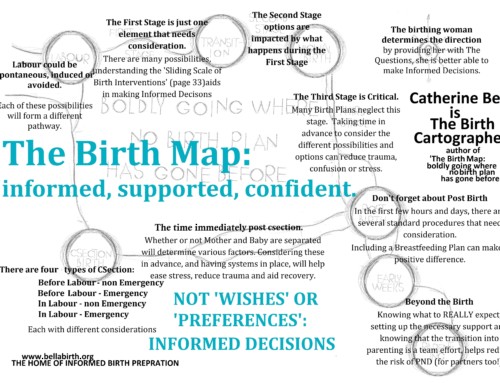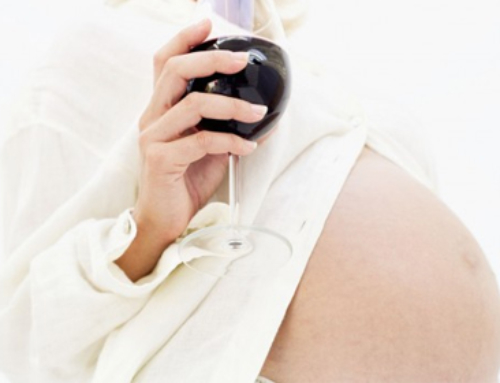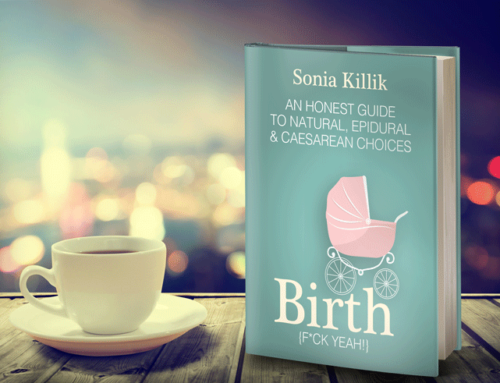By Tracy G. Cassels
Thanks to someone on EP, I became aware of a new article being touted by anti-homebirth activists as being proof that homebirth is inherently dangerous. The article, prepared by the Mel and Enid Zuckerman College of Public Health First, we need to be clear – this research is looking ONLY at midwives. So it’s not just about hospital v. home, but about these factors interacting with midwifery. Now, the conclusions from this study? “Analysis of combined data from all 8 studies showed a three-fold increase in risk of neonatal deaths for home birth attended by midwives, compared to hospital births.” (Taken from the abstract.) First, it’s a little disingenuous because it implies the home birth midwives are compared to hospitals and doctors, but it’s midwives across the board. Second, let’s actually take a look at what they found. I mean, 8 studies looking at this? Impressive. Oh, wait. Nope. There were only two studies that actually included neonatal death rates: One from Hutton (2009)[2] and one from Malloy (2010)[3]. This new piece is kind enough to actually provide the image of their meta-analysis for the neonatal death outcome (it’s figure 2 if you’re looking at the original, on p. 17) and we can see from this that the differences in population used mean that this 3-fold finding is coming from one study, the Malloy (2010) paper. It had an odds-ratio of 3.24, as reported herein, whereas the Hutton (2009) study had a non-significant OR of 1.50 (meaning they found no difference between home and hospital). What do we do? Of course we go get the Malloy paper, as we must. The very first thing that comes to my attention is that they report their OR NOT as 3.24, but as 2.02. I hope your spidey sense is tingling because something very fishy is going on here. Looking through the original Malloy paper, one can see that they provide, rightly, an adjusted OR. This means they present the OR controlling for other variables we know to influence neonatal death. Specifically, women in their analysis who birthed at home with a midwife (versus in a hospital or birth center with a midwife) were more likely to be older and be later in gestation (both over 40 and 41 weeks of gestation). So the adjusted OR accounts for these and lowers the OR. But even in Malloy (2010) we see a significant effect of homebirth with a midwife. Now, analysis of the absolute neonatal death rate is risky because of these confounding factors (which can only be controlled for in terms of OR), but let’s look at the actual death rates for each group they looked at: Note: Values are deaths per 1,000 live births, the standard way of noting death rates. Remember, both Home groups had much higher risk factors for problematic deliveries than any of the other three and these rates do not reflect that. And notably, in both Malloy (2010) and the Arizona review, there were no other negative outcomes associated with home birth with a midwife versus hospital birth with a midwife. Now let’s talk about the big issue that isn’t in the report… The actual neonatal death rate in the USA. Let’s look at the actual neonatal death rate in the USA given that often the homebirth argument stems from the notion that midwives are not as trained as OBs. At the time of the research herein, the neonatal death rate was approximately 4.3 per 1,000 live births (and this was the lowest rate I could find – some were as high as just under 7)[4]. Obviously, many of these would have been much higher risk pregnancies that would have been in a hospital to begin with and are unfair to include. But it suggests the numbers we’re looking at here aren’t actually that high. And when we talk about home birth with a midwife versus hospital birth without, we have competing factors. In fact, if we look at the other review touted by anti-homebirth advocates, the infamous Wax et al. study[5] (which I have dissected here, and many others discredited this one quickly too), the baseline rate for perinatal death (really more relevant as it deals with the death in the first 7 days of life instead of 28 days), the hospital baseline is 0.8 deaths per 1,000 live births (0.9 if we look at neonatal deaths). One very important thing to remember here is that these rates are in countries with much lower neonatal death rates than the US. For example, Canada has a neonatal death rate of 3.7, Switzerland 3.1, UK 3.1, the Netherlands 2.8, etc. These are the countries that dominate the Wax et al. study and include only comparable low-risk pregnancies. So, in fact, 0.8 is probably on the lower end of the comparison. What does this mean? It means that home rate of 1.0 or 1.8 probably isn’t far off from a hospital averages in the US. Especially for women who already fell into a higher than low-risk group. We know that both maternal age and weeks gestation are important predictors of heightened risk for neonatal death (sometimes doubling that risk)[6], and these two factors were significantly different in the home birth groups herein. This means it is very difficult to say that home birth is inherently unsafe relative to most general hospital births. What we can say is that having a midwife in a hospital setting may be safest of all. But I don’t think the OBs want to hear that either. One final thought. None of these reports or studies address the fact that other countries with integrated midwifery and home birth plans have no increase in any mortality or morbidity factors associated with home birth. Why is this? Honestly, I don’t know. Perhaps it’s the fact that midwives and hospital staff aren’t fighting each other. Perhaps it’s that with integration comes better training standards. Or perhaps because it is integrated, there are far more policies in place to help everyone. However, I have heard anti-homebirth people and many OBs (not just the loud-mouthed ones) aim their venom at midwives more generally. After all, they argue that the reason homebirth isn’t safe is because midwives are poorly trained all around the world. Clearly that’s not the case and they may want to do their homework a bit more. After all, OBs are the group that, in a bid for legitimacy (i.e., popularity with women), gave women “Twilight Sleep” even though other doctors said it was dangerous and it was never technically allowed. We all know how well that went. Take of that what you will, but know homebirth with a trained attendant is actually quite safe for low-risk pregnancies. Don’t let bad statistics fool you. [Image Credit: Unknown]
[1] Ehiri et al. Outcomes of home vs hospital births by attended by midwives: a systematic review and meta-analysis. Prepared for the Arizona Department of Health Services 2013. [2] Hutton EK, Reitsma AH, Kaufman K. Outcomes associated with planned home and planned hospital births in low-risk women attended by midwives in Ontario, Canada, 2003-2006: a retrospective cohort study. Birth 2009; 36: 180-9. [3] Malloy MH. Infant outcomes of certified nurse midwife attended homebirths: United States 2000 to 2004. J Perinatol 2010; 30: 622-7. [4] http://www.healthynewbornnetwork.org/resource/neonatal-mortality-rate-country-data-excel-spreadsheet [5] Wax JR, Lucas FL, Lamont M, Pinette MG, Cartin A, Blackstone J. Maternal and newborn outcomes in planned home birth vs planned hospital births: a metaanalysis. AJOG 2010; 243: e1-e8. [6] MacDorman MF, Kirmeyer SE, Wilson EC. Fetal and perinatal mortality, United States, 2006. National Vital Statistics Report 2012; 60.
Hospital – Certified Nurse Midwife (CNM)
Hospital – Other Midwife (OM)
Home – CNM
Home – OM
Birth Centre – CNM
0.5
0.4
1.0
1.8
0.6






Leave A Comment